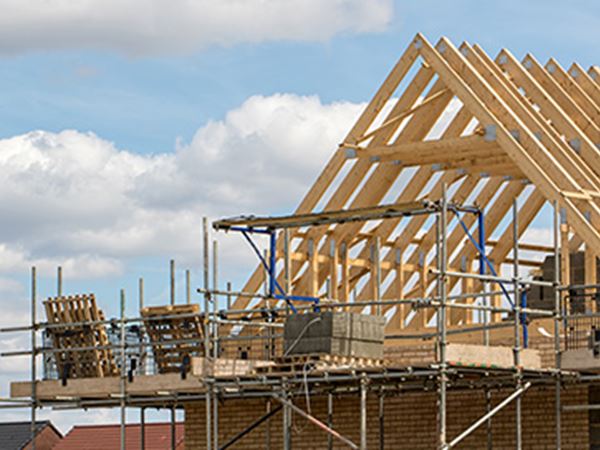Through Knowing our Homes, we aim to establish a shared, standardised approach across the social housing sector for gathering and using information about property condition and residents. We will do this by developing a framework that all social landlords can sign up to, which is deliverable and does not require a disproportionate level of resource.
As part of the action plan we published together with CIH in response to the Better Social Housing Review, we have committed to a range of work to address the issues identified by the independent panel. One of the key recommendations is to improve how social housing providers collect and use data – both about the condition of the homes they manage and about who lives in them. Knowing our Homes has been developed to address this.
Best practice
See examples of housing associations working to improve the quality of their residents' homes and to meet residents’ individual needs.
Case studies
How we will achieve this
We aim to do this by developing a framework that all housing associations can sign up to. It must be deliverable and not require an unrealistic level of resource. We expect this to include:
-
A core set of standardised measures of stock condition which align with regulatory requirements, including the Decent Homes Standard and other relevant legislation.
-
An agreed set of data to collect on residents – including both protected characteristics (including ethnicity) and other factors that may make them vulnerable to specific issues like damp and mould. This may not necessarily mean data that are routinely collected and updated for all residents.
-
Guidance and good practice examples of drawing together up-to-date information on property condition from different sources (including repairs requests and complaints), linking up information about properties with information about residents, and using this information to improve services for residents.
Links to government policy
Changes in government policy around the regulation of social housing are being introduced with the aim of improving standards and the quality of homes in the social rented sector. By developing clearer shared approaches and sharing examples of good practice through Knowing our Homes, we will help our members prepare for these upcoming changes.
The Regulator’s new consumer standards have strong links to our areas of focus. It will require social landlords to:
- Have and keep up to date an accurate record at an individual property level of the condition of their stock based on a physical assessment of all homes.
- Draw information about property condition from other sources, to ensure that landlords have a rounded view of the condition of their stock and the needs of individual residents living in those homes.
- Have robust information about their residents, keep this up to date, and use this to understand the diverse needs of residents.
- Deliver repairs, maintenance and planned improvements to homes in a way which is informed by the needs of individual residents, for example by increasing the priority of repairs for some older residents with certain disabilities and health conditions.
- Use relevant information and data to assess whether all residents have fair access to (and equitable outcomes of) housing and landlord services.
In addition, the government intends to consult soon on a revised Decent Homes Standard.
In 2023 we shared feedback on behalf of our members as part of the sounding board which reviewed early proposals.
We will incorporate compliance with the revised Decent Homes Standard as part of our core indicators of property condition.
Workplan
Our workplan for delivering this project is split over four stages:
- Baselining: understanding current data collection practice. This is an important step – we need to understand how social landlords of different types and sizes are currently gathering and using data on their properties and residents. This is so that any proposals we make going forwards are realistic. We have started this work with our core member group and are beginning to extend to our broader membership.
- Developing outline proposals: draft core indicators, begin collating and sharing examples of good practice, and early testing of proposals with the sector.
- Determining detailed proposals and supporting guidance: revise core indicators following wider member engagement, share further good practice examples and draft guidance and supporting documents.
- Preparing for implementation: finalise details for initial launch and develop the support we will provide to help members adopt our framework. Implementation itself will take place over a number of years.
The timings of this will be linked to the progress of key areas of government policy, including the review of the Decent Homes Standard. Our aim is to have some key proposals and supporting documents ready to test in early 2024, but we recognise that it may take a number of years for landlords to implement the details of our proposals. We will share examples of good practice on an ongoing basis, and will support housing associations as they continue to make improvements and adjustments.
Member engagement
Our ability to deliver this work will depend entirely on close and ongoing engagement with our members and other key stakeholders. We have established a core group of members, including representatives from smaller and medium sized housing associations, who are helping to drive and steer this work through monthly meetings.
We are also engaging closely with our other key membership bodies. Over the past few months, we have presented updates on this work and received feedback from our Quality of Existing Homes Group, National Quality Homes Network, Rural Housing Alliance, and Delivering Great Homes group. Overall, members have responded positively and have shared useful insights on how we can develop our proposals. We will provide updates to several other member groups over the coming months.
We recorded a webinar in June 2023 to provide an introduction and overview of Knowing our Homes.
Working in partnership
Engagement with our members and other key stakeholders will be crucial to the success of this work. Our core task and finish group of members is helping to drive this work, and we are also engaging closely with other member groups such as smaller housing associations and supported housing providers. We will test our proposals with all NHF members to ensure they work for all different types of housing associations.
We are working to ensure this can be adopted by other social landlords too. We have agreed an approach to joint working with the Local Government Association, National Federation of ALMOs and the Association of Retained Council Housing. We think this work will be most impactful if it covers the entire social housing sector.
We will also be engaging very closely with key external stakeholders. We meet regularly with the Regulator and officials from DLUHC, to help ensure our proposals are in full alignment with upcoming changes to legislation and regulation. We will draw on the expertise of relevant specialists throughout the project, including organisations focused on data and analysis, resident engagement and IT systems.
What we're currently working on
Understanding current data collection practice
We have been gathering information from our core member group to identify how they currently gather, analyse and use information about property condition and about their residents. Understanding current data collection practice is a vital first stage in this work. It will help us to identify both good practice and the challenges and barriers organisations are currently facing. We need to understand what the sector is currently doing to ensure that the proposals we develop are realistic.
We have also gathered information from across our full membership through a survey, as well as from local authorities and ALMOs. We received responses from housing associations with as few as 10 homes and others with over 100,000 homes, so we were able to compare approaches across organisations of very different sizes. One thing this revealed is that most organisations of all sizes have already been taking steps to improve how they monitor and improve the condition of their homes.
We're working with the Royal Institute of Chartered Surveyors (RICS) to develop a first of its kind standardised stock condition survey. We’ve had initial discussions with housing associations and local authority landlords, and we’ll be working alongside our members, as well as other social landlords through the Local Government Association, National Federation of ALMOs and the Association of Retained Council Housing, to develop this work.
Developing the core indicators
We have begun discussing early suggestions for our core indicators linked to property condition and residents with our core member group. We have agreed that the property condition indicators will directly include compliance with regulatory requirements such as the revised Decent Homes Standard criteria and the Tenant Satisfaction Measures which are linked to property condition. We will discuss other potential elements which would help social landlords to meet the expectations the Regulator has set out in their new consumer standards.
We have agreed that the resident focused indicators will include some level of comparing outcomes for groups of residents with different protected characteristics. This will include residents’ ethnicity and we will discuss which other characteristics to include. We will also look to develop guidance and share examples of good practice related to how landlords can best identify when residents have health conditions or other additional needs which should be considered when arranging and prioritising repairs, maintenance and planned improvements to homes (as will be required by the Regulator through their new consumer standards). To help inform our thinking in this area, we will be running roundtable sessions with different groups of social housing residents over the coming months. We will aim to ensure these sessions give a diverse group of residents an opportunity to share their views.
Identifying good practice and developing guidance
We have already begun to identify examples of good practice from our core member group and other engaged members. We will begin sharing details of these with our wider members over the coming months.
We are developing plans to produce guidance in several areas, building on and referencing examples of good practice from across our members.
What’s next
We will continue to develop our proposals with our core member group and to test them with other NHF and CIH member groups and key external stakeholders.
Get involved
We are keen to hear views from our members throughout this project. If you would like to contribute, or have any further questions, please get in touch.
For early opportunities to input into this project and our broader work related to asset management and the quality of existing homes, join the National Quality Homes Network.












